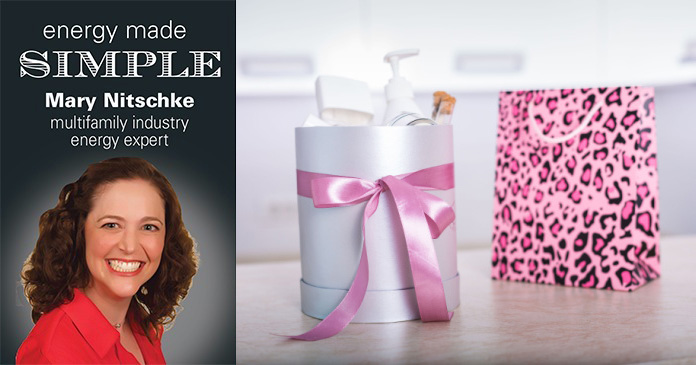
I am not much for wearing makeup because I cannot stop rubbing my face. Typically, any applied eye makeup ends up on my check, neck, sleeves, and on any furniture I happen to encounter. Yet I am fascinated by the marvelous makeup counters, especially this time of year when they offer to those selected few a glorious gift bag, containing products that the consumer may not have come in for, but will most likely try in some capacity because they are free or no cost. We get excited about the free stuff like found treasure. Yet we all know that free stuff comes with a price, it is just embedded in the prices of the other things we are purchasing.
I want you to think of your energy provider as the makeup counter in a fancy store, doling out free stuff. Whenever I was lucky enough to have gotten involved in the renovation of a property, the first thing I would do was troll the makeup counter (AKA the utility provider for that property). You see, utility providers will make money even when they give away efficient products. This happens two ways. First, the utility provider may create a special rate case to fund the efficiency-boosting products. This means that as a consumer, you paid for the thing through your utility rate prior to getting the free stuff. When the fund is exhausted, the utility provider stops giving away the free stuff, or incentivizing the efficiency upgrade. The second way is that the profitability for the utility company is set by the public utilities commission, and it doesn’t matter how much energy is sold, but that they sold it. This means that if the energy provider can reduce consumption, they are more profitable because they need to produce less energy to be awarded their profit margin (its slightly more complex than that but you get the gist).
All in all, what this means is that your first step in the journey of what’s the low hanging fruit, where do I start, how do I know what to target, can start with a call to the utility provider about rebates or free stuff. I can tell you from personal experience that you generally look like a superhero when you hit your renovations team with a bunch of free gifts, and then your asset managers see the NOI for the property improve because common area costs for energy have dropped. Thank you, free gift bag, thank you makeup counter for making us look so very good.















